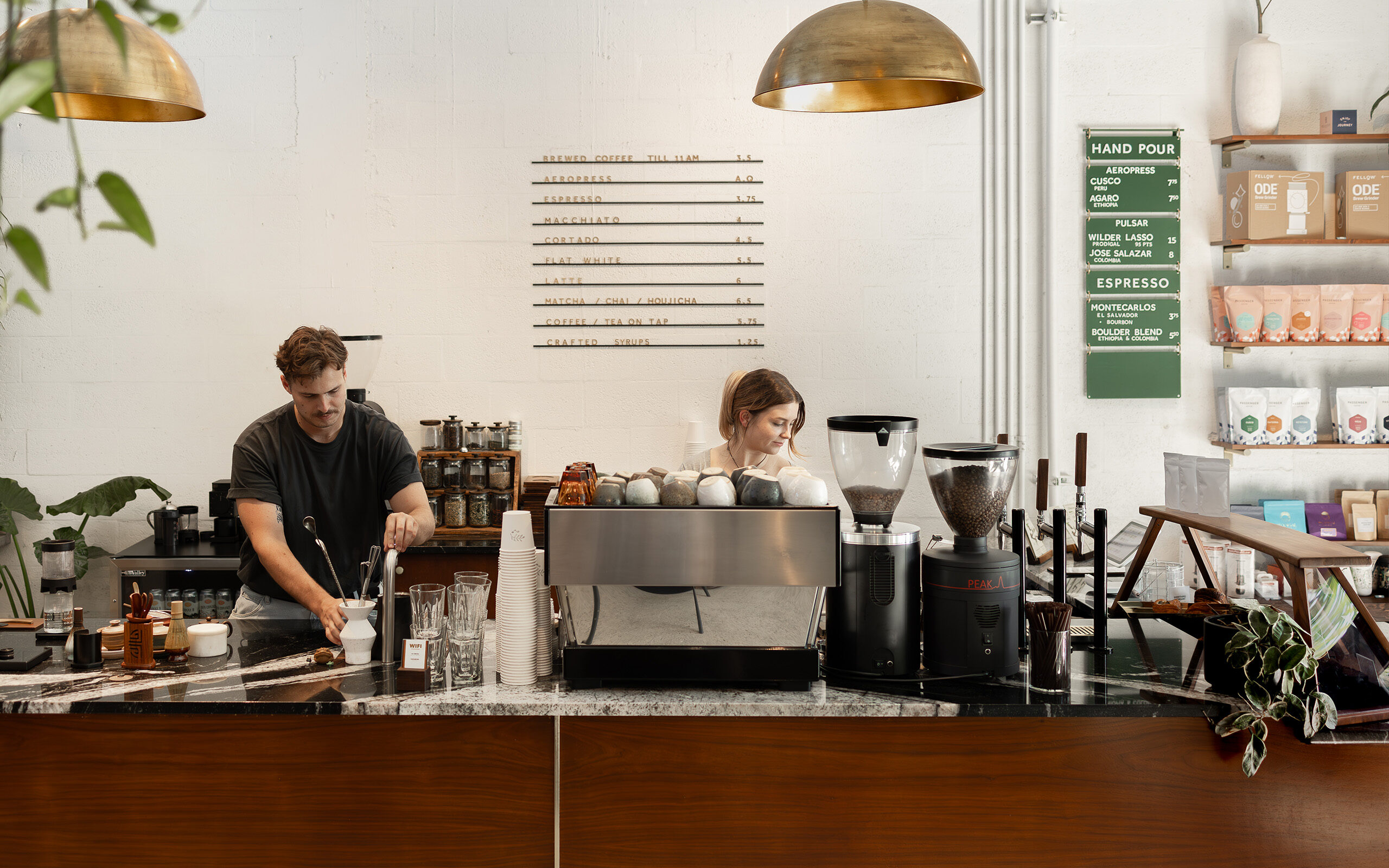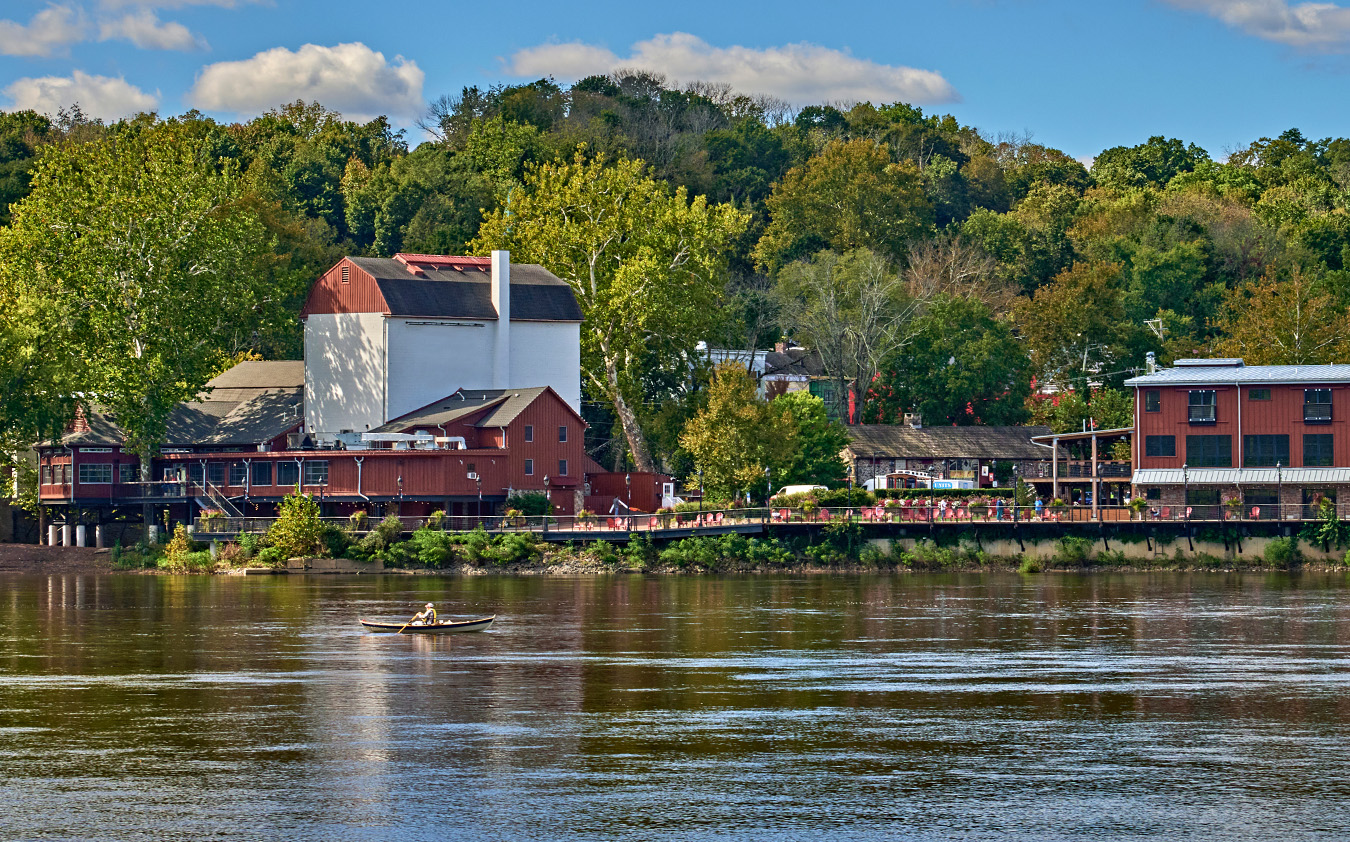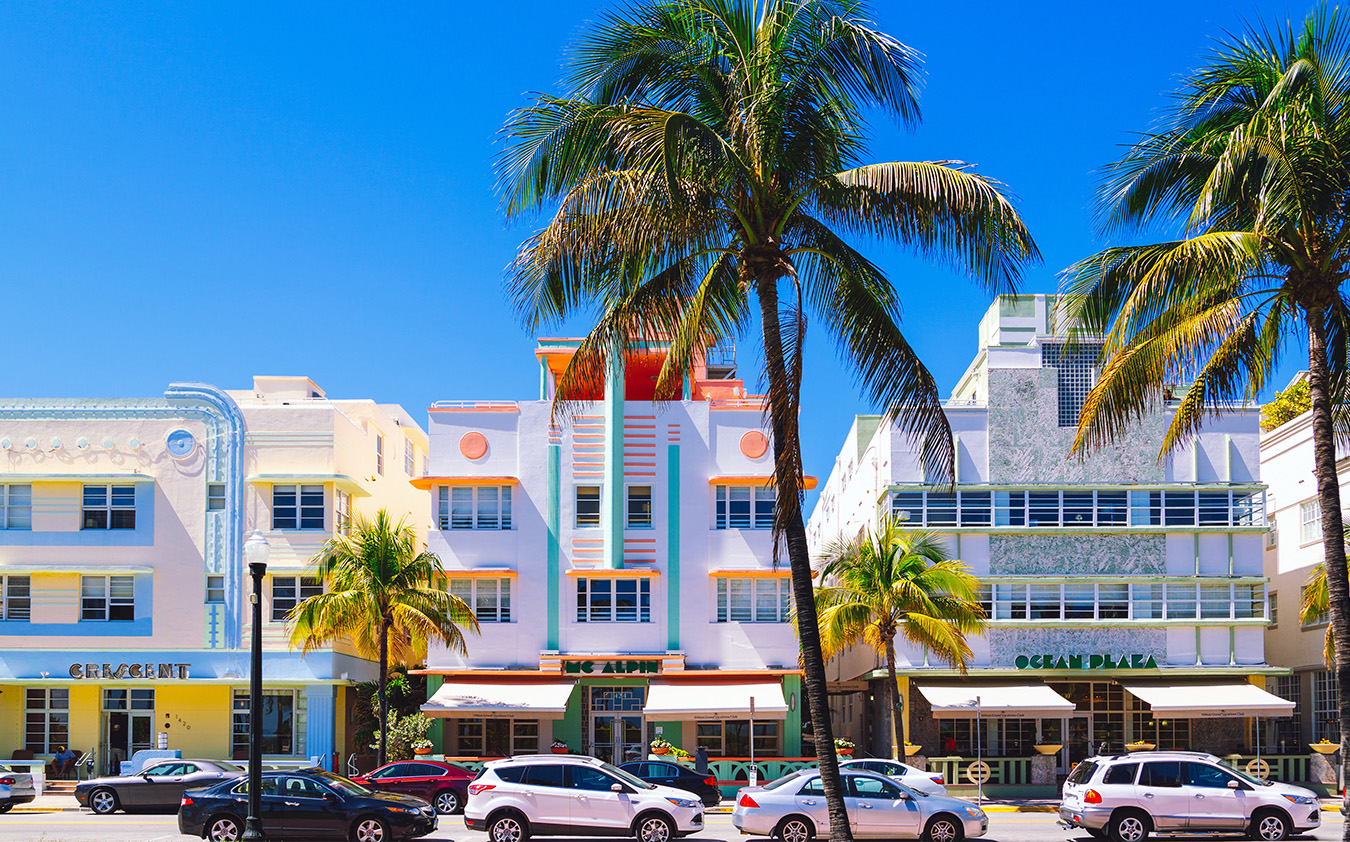
The Pastel Perfection of Miami Beach Art Deco
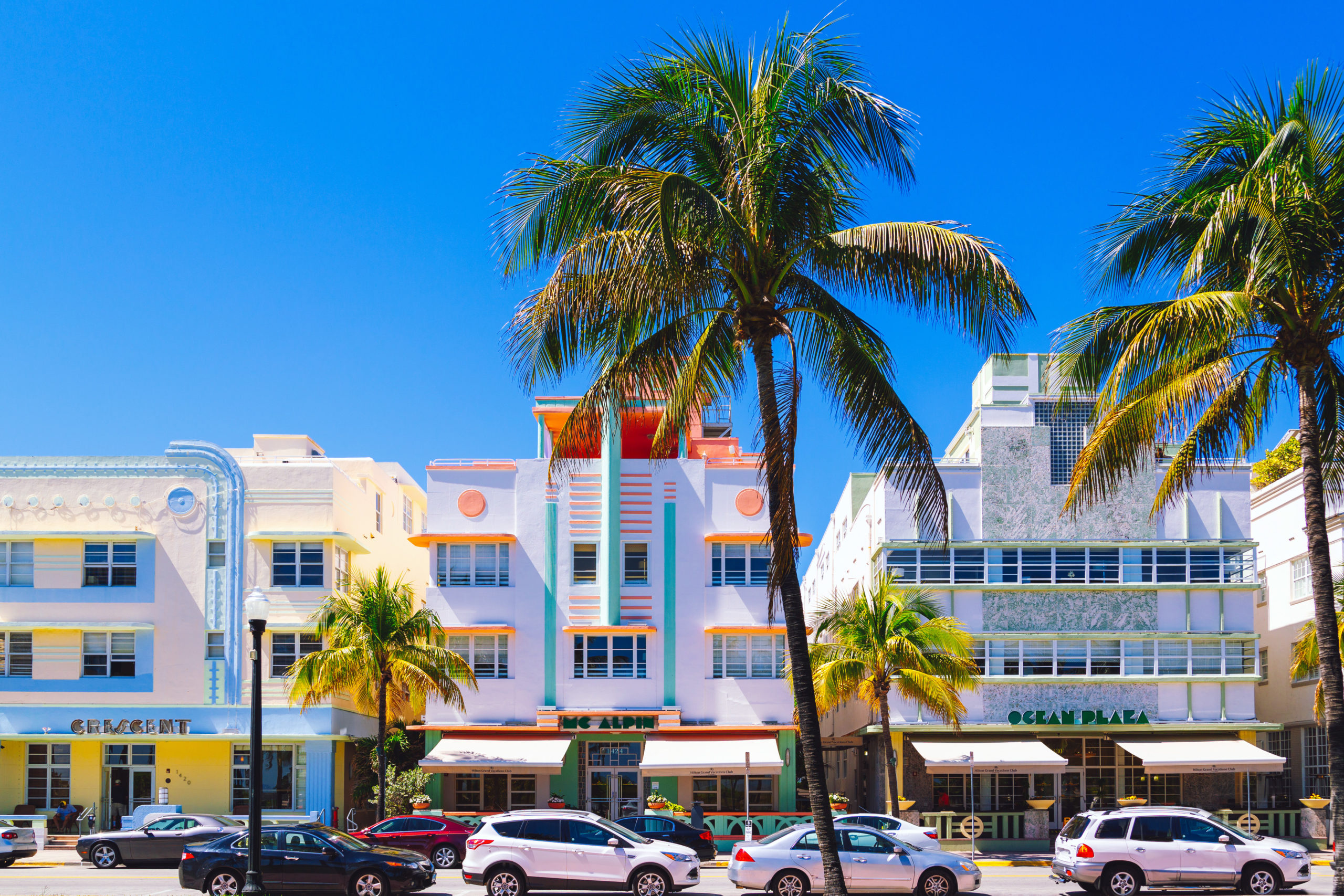
The Miami Beach Architectural District comprises the world’s most extensive collection of Art Deco structures — often aglow in neon, introduced via marquee, and done up in tropical pastels.
What is it that truly defines Miami Beach? The potential answers are plentiful. But if there’s a single constant that sets Miami Beach apart and makes it unlike anywhere else in the world, it might be the Art Deco.
In a place increasingly defined by modern flash, glitz, and glamour, the city’s Art Deco design is unabashedly vintage, a quaint reminder that everything comes from somewhere. Miami Beach holds an unrivaled showcase of the style, with over 900 such buildings just within the designated Miami Beach Architectural District. This sizable area — roughly bounded by 6th Street to the south, Alton Road to the west, Lincoln Road and 23rd Street to the north, and the Atlantic Ocean to the east — was the first landmark district recognized by the National Register of Historic Places to be composed entirely of 20th-century buildings.
Art Deco 101
While its origins trace to Paris pre-World War I, Art Deco really picked up steam at the 1925 World’s Fair its name derives from, the Exposition Internationale des Arts Décoratifs et Industriels Modernes. The war was over, and artists longed for an uncomplicated way to sufficiently express the palpable sense of hope present in everyday life. Designers wanted to turn familiar objects — clocks, flatware, furniture, etc. — into pieces of flair without compromising function. Graphic artists searched for ways to display adoration for an increasingly mechanized age. Architects dared to dream, “What if a building looked nice?”
Art Nouveau, already on the decline, felt too elaborately hand-crafted and delicate for the modern mechanized world. As a raison d’être, Art Deco was more about duplicatable modes than singular pieces — perhaps partly why the movement largely eschewed painting and sculpture while elevating interior design, architecture, and the like. Borrowing from modernist styles like Cubism and De Stijl, a visually-pleasing yet unchallenging form was born of symmetrical geometry and stately simplicity. In many ways, Art Deco is the mainstream equivalent of its antecedents, the New Order to Cubism and De Stijl’s Joy Division.
Art Deco’s decorative nature and utopian spirit allowed its parallel lines, boldly simple shapes, and general visual appeal to apply across artistic disciplines. It is responsible for some of the best-known buildings in the world: In New York City alone, Art Deco has given us the Empire State Building, the Chrysler Building, and Rockefeller Center (including Radio City Music Hall). Brazil’s towering Christ the Redeemer statue, Studebaker’s Land Cruiser sedan, countless movie palace interiors, René Lalique’s jewelry and glass designs, numerous illustrated covers of Harper’s Bazaar, Vanity Fair, and Vogue — all Art Deco.
Building the Buildings
Miami Beach started expanding the moment developers claimed its then-swampy sandbar setting in pursuit of the idealized tropical resort. Chartered as a town in 1915, it would become a city by 1917. A swelling population reached approximately 6,500, adding over 6,000 citizens from 1920 to 1930 alone. Amid that steady growth into Florida’s 1920s land boom, however, a 1925 real estate market downturn was exacerbated by the Great Miami Hurricane of 1926. The city sustained significant damage — when your area sits smack-dab between the capitalized words “Great” and “Hurricane,” you know you’re in trouble — with buildings destroyed, streets flooded, and thousands left unhoused. Then came the 1929 stock market crash and the subsequent Great Depression. In summation, bad times all around.
Yet because Miami Beach was already in a rut post-hurricane, its eventual bounce-back outpaced the rest of the country. Things were boomeranging upward by 1933, culminating in another full-on surge in the middle of the decade. As the 1940s started, Miami Beach’s population inflated to roughly 28,000, without even accounting for its tens of thousands of seasonal tourists.
Ultimately, Miami Beach’s embrace of Art Deco was a perfect storm of circumstances: The city needed buildings to accommodate the people, it had the space to do so, and Art Deco was the style at the time.
Dozens of architects, like Albert Anis, L. Murray Dixon, and Henry Hohauser, took their talents to South Beach. Rapid development ensued in the mid-1930s, resulting in an astounding architectural consistency encompassing Miami Beach’s many shades. In less than a decade’s time, this group of architects was responsible for over three-quarters of the buildings constructed in Miami Beach. Hotels, single-family homes, government buildings, theaters, restaurants, storefronts — it didn’t matter. There was no overarching grand plan to build up Miami Beach in Art Deco; everyone was just riding the aesthetic wave.
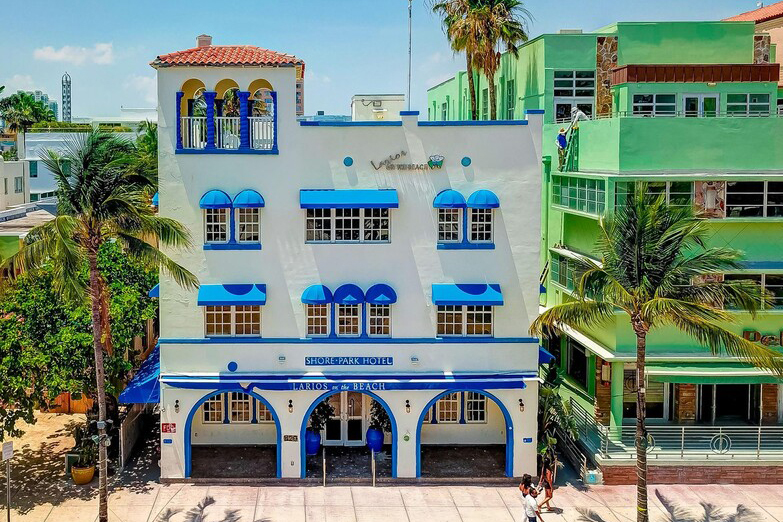
When Art Deco arrived in South Florida, the style associated with Roaring Twenties bombast morphed into a distinctly subdued subvariant. “Streamline Moderne” came into vogue following the events of 1929, with the persisting hope for a better tomorrow pinned on expressing resilience through modernity. (Or, put in more Streamline Moderne-type terms, the belief that less is more). Grandiosity was peeled back, encouraging a more sensible approach to Art Deco. Materials like gold and granite were replaced by human-made substances like chrome and concrete. Vivid coloration gave way to off-whites, beiges, and earth tones. Architects still had a license for artistic flourish, but nothing would again approach the levels of, say, the Chrysler Building’s Plymouth hood ornament gargoyles.
Creating within the bounds of Streamline Moderne became more about turning the building facade into a decorative canvas by manipulating straightforward geometric shapes. Out with the silvery crowns sporting a sunburnt pattern of triangular vaulted windows — sorry to keep picking on the Chrysler — in with boxy builds, curved corners, symmetrical window bands, and marquees. Of all the embellishments present in Miami Beach Art Deco, the style doesn’t get bolder than with its marquees. They let each building boast a distinct identity announced loud and proud in aluminum or neon sans-serif fonts. No structures benefitted more from this ego boost than hotels.
Defining a District
Above all other structures, hotels are the calling card of the Miami Beach Architectural District. Given the area’s initial aspirations as a “tropical playground,” it makes sense. What better way to entice folks to vacation down south than lodgings with a raw visual appeal? Most hotels sit along Ocean Drive and Collins Avenue, with those on the former claiming the extra advantage of Atlantic Ocean views. But even disregarding that bonus benefit, these places shine.
That’s literal in the case of the Colony Hotel, designed by Hohauser on Ocean in 1935, which adds a neon blue glow to the South Beach night from its inverted T-shaped marquee. Or look a few blocks north to the Leslie, a c. 1939 Anis creation bearing other district hallmarks like eyebrow-like window awnings and a tripartite facade with a stylized, attention-grabbing center panel. Meanwhile, Essex House (Hohasuer, c. 1938) has a look reminiscent of an approaching steam locomotive from its corner residence along Collins — fitting, given Streamline Moderne’s broad applications to train design during this period. And that’s merely scratching the surface.
Venturing inside a building within the historic district shows that sometimes you can judge a book by its cover. Impressive, recurring interior design elements include terrazzo floors, murals depicting Florida’s nature and history, wrought-iron railings, and glass etchings of Florida-specific iconography (think flamingos and palm trees). This theme extends even to the Miami Beach Post Office, completed by Howard Lovewell Cheney in 1937 and backed by Franklin D. Roosevelt’s Works Progress Administration. Embodying faith in advancement during the Great Depression, the building’s imposing exterior gives way to a round lobby awash in sunlight through a 10-foot-tall glass block wall and adorned with gold mailboxes, a triptych mural, a fountain, and a teal ceiling that frames the underside of the post office’s dome as the sun.
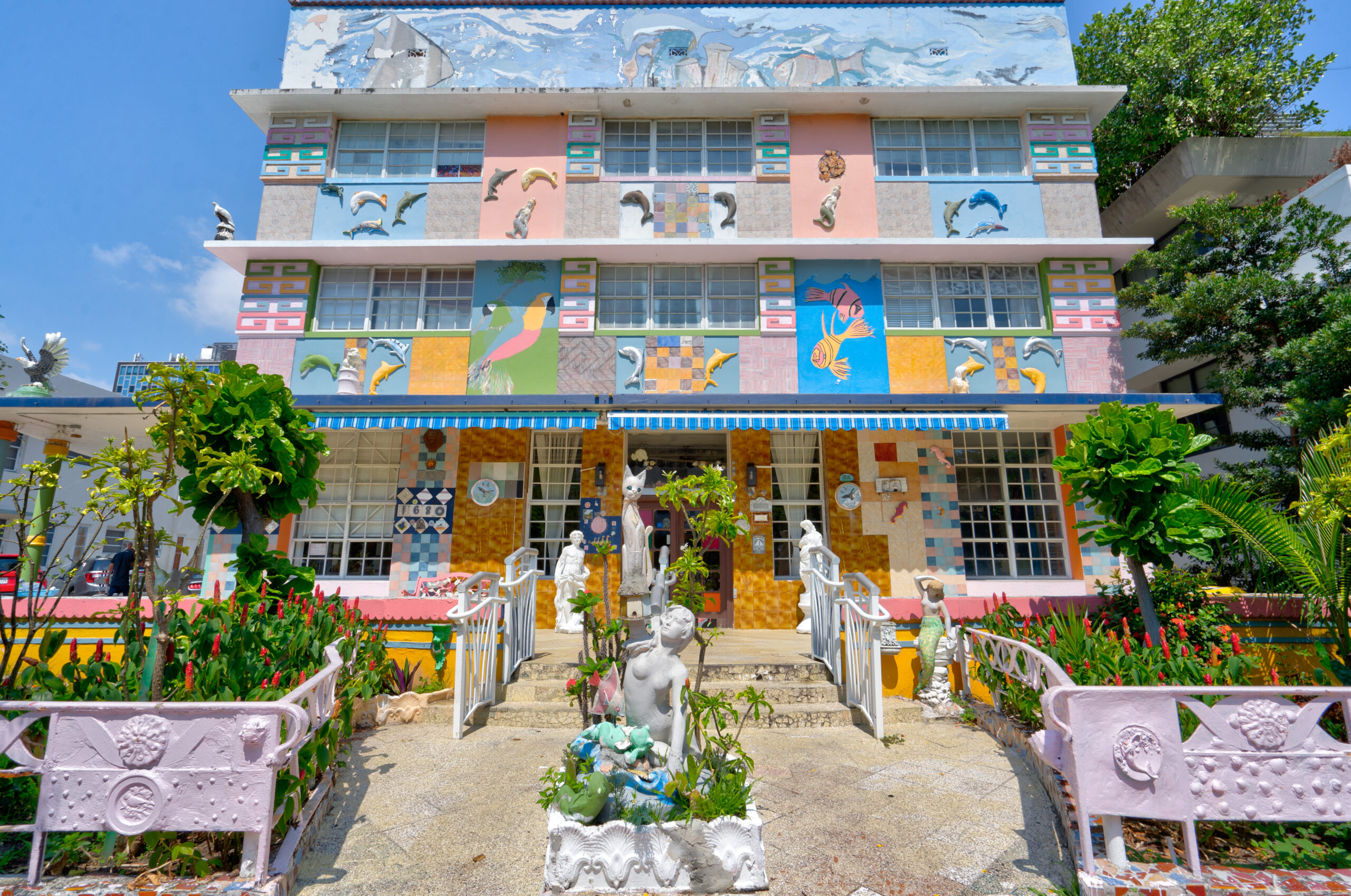
Homes composing the historic district’s most cohesive construction surround Flamingo Park. Multi-unit apartment buildings bear proportional dimensions owing to hyper-uniform lot sizes. Expect stucco and concrete structures flaunting ribbon windows and horizontal banding, often with extensive vertical detailings acting as a counterpoint to the latter. Free-standing homes exist in this area but are made mainly in another enduring South Florida architectural style — Mediterranean Revival.
Commerce concentrates on the north-south Washington Avenue and the east-west Lincoln Road. Washington maintains more uses beyond commerce — it’s also home to Miami Beach’s Old City Hall and the aforementioned post office — and appears more varied than the other major thoroughfares. Lincoln stands out not necessarily for its buildings but for its function. As of 1957, Lincoln Road between Collins Avenue and Alton Road is closed to car traffic, serving as a lushly landscaped pedestrian-only promenade. Essentially, it is one long open-air mall. One standout Art Deco piece of Lincoln Road is the Lincoln Theatre. Though it hasn’t screened a movie or staged a concert in decades, its c. 1936 Thomas W. Lamb design fits in with the architect’s other storied cinemas and theaters — including NYC’s staggering United Palace.
Everlasting Style
Miami Beach’s preservation movement began in earnest during the 1970s. Following World War II, Art Deco declined in popularity. In South Florida, it was gradually supplanted by Miami Modern’s tasteful excesses. The area’s Streamline Moderne buildings started falling into disrepair and existed in one of two states: slated to be demolished or already demolished.
Activists led by Barbara Baer Capitman rallied support to rescue them, forming the Miami Design Preservation League in 1976. Emboldened by the country’s bicentennial, the league sought to save a distinctly 20th-century class of American architecture, going so far as to stand in front of bulldozers — the kind of stuff only characters in television dramatizations do.
One of Capitman’s early cohorts was interior designer Leonard Horowitz, who applied his expertise to exteriors and gave things a fresh coat of paint. Seriously. Horowitz’s idea for restoring buildings’ faded glory was repainting them with pastel accents, harkening back to Art Deco’s initial favor of flamboyant tints. Objectively speaking, it was a brilliant move. Miami Beach would feel incomplete today without the “Miami Vice” vibes created by Horowitz’s color palette, inspired by the city’s natural beauty — the ocean, the sand, the sunrises and sunsets. Per Horowitz in a 1987 Orlando Sentinel interview, “I added the icing to those wonderful cakes.” Some buildings go all out in their colorful ways; others opt for subtler applications. Regardless, they feel part of a united whole.

Between bulldozers not wanting to crush them (and other people taking notice of the fresh pastel hues) the Miami Design Preservation League won out. On May 14, 1979, the historic district was declared.
Nowadays, it would be tough to picture a Miami Beach without Art Deco; even the neighborhood’s lifeguard towers are in on the fun. The annual Art Deco Weekend festival celebrates the city’s integral vintage flair with tours, talks, film screenings, concerts, and much more.
Of course, you don’t need to wait for one specific set of three days per year. Miami Beach’s Art Deco architecture is always there — a link to the past, indelible in the present, and timeless into the future. Plus, it’s only one facet of a multidimensional metropolis, one where you can indulge in the thrilling nightlife, experience world-class art, and shout over the time remaining in a Miami Heat game.
Or, you know, hit the sand. They don’t call it Miami Beach for nothing.


